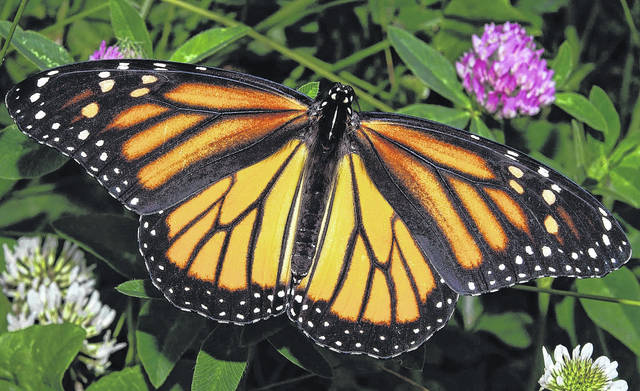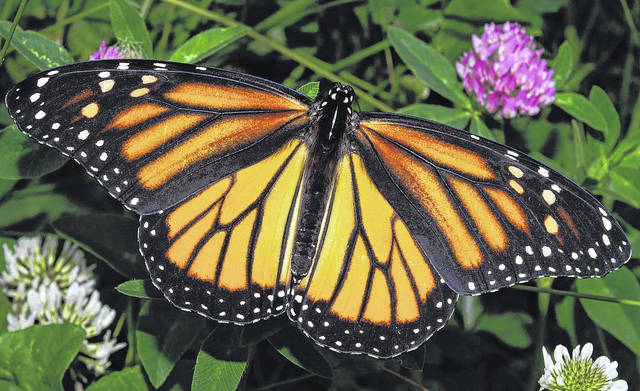

GREENVILLE — Darke County Parks naturalist Mandy Martin delivered a lecture on the plight of the Monarch butterfly at the Greenville Public Library Wednesday night. These distinctive orange and black butterflies, according to Martin, are in danger of becoming extinct, which could end up having a big impact on the rest of our environment.
According to Martin, habitat loss due to illegal logging, as well as pesticide use and other agricultural practices, has led to an enormous decrease in the population of monarchs being observed in North and Central America over the last several years. An equivalent loss in human population, Martin said, would be if every human being in the U.S. suddenly disappeared without a trace, except for the populations of Ohio and Florida.
In addition, tourism in Mexico – including those who specifically travel there in order to observe the large populations of monarchs – is also having an effect.
“We’re loving them to death,” Martin said. “Just like we do our national parks.”
Monarchs have a relatively short life cycle that includes a couple of large migrations. Those found in the western half of the United States spend the winter in California, while those east of the Mississippi migrate to Mexico during the colder months. Once the weather improves, the insects fly north, mating and laying eggs on milkweed plants along the way. These eggs produce monarch caterpillars, which in turn grow into butterflies, and once the winter rolls in again, this new generation of monarchs will head south, starting the cycle over again.
This cycle was disrupted in 2012, however, when soaring corn prices led to the production of unusually large corn crops which, in turn, led to fewer fallow fields containing large amounts of milkweed. Hardier pesticides have also led to reduction in the milkweed ranks. As a result, ensuing generations of monarchs have been forced to lay their eggs in large clumps, leading to too many monarch caterpillars competing for the same food source and, consequently, only relatively few of the insects surviving.
The impact this has on the larger environment is that monarchs are prominent pollinators – meaning that, like bees, the insects feed on the nectar found in flowering plants, picking up pollen along the way and spreading it to the next flower they land upon, which is then fertilized. As a result, declining bee and monarch populations lead to plants being unable to reproduce, which leads to fewer plants, which leads to reduction in the populations of animals that feed upon those plants, and so on.
An organization called Monarch Watch at the University of Kansas has established a number of “monarch waystations” across the U.S. in an effort to combat this trend, including one at the Greenville Public Library. These waystations lie in-between the areas in California and Mexico, where the insects migrate for the winter, and those farther north that they use for reproduction during the breeding season.
The sites contain milkweed plants that the monarchs are able to use to lay their eggs, as well as nectar flowers that they’re able to feed upon. Waystations typically include at least 10 milkweed plants. Martin said that helping establish and contribute to these sanctuaries is one way Darke County residents can contribute to easing the monarchs’ plight.
“We need as much milkweed in the corn belt as we can get,” Martin said.





